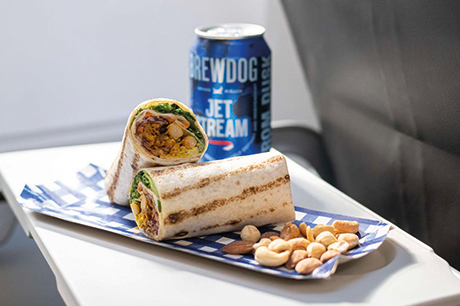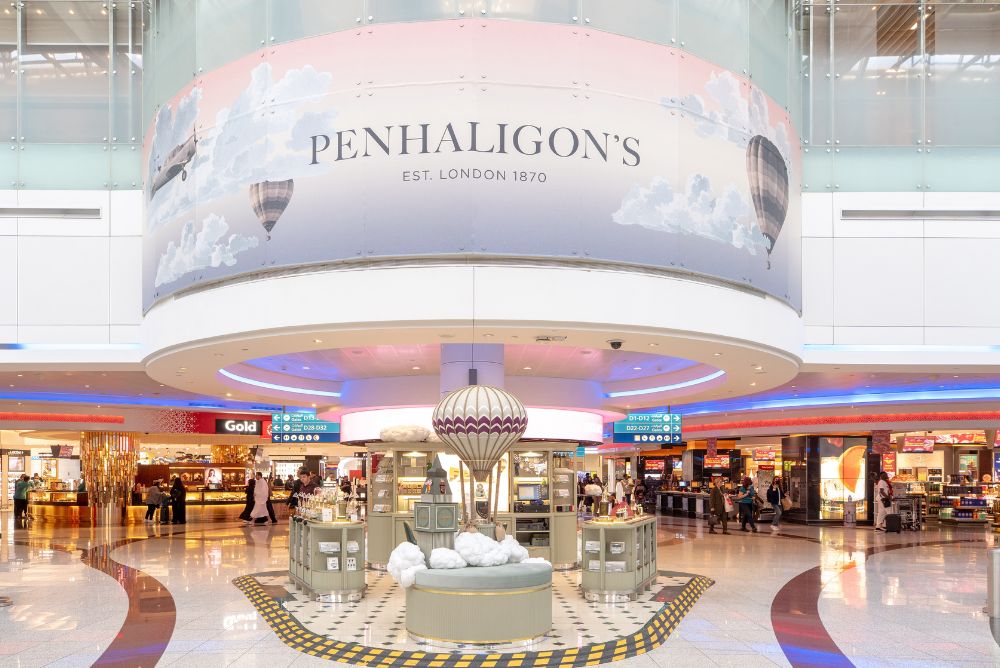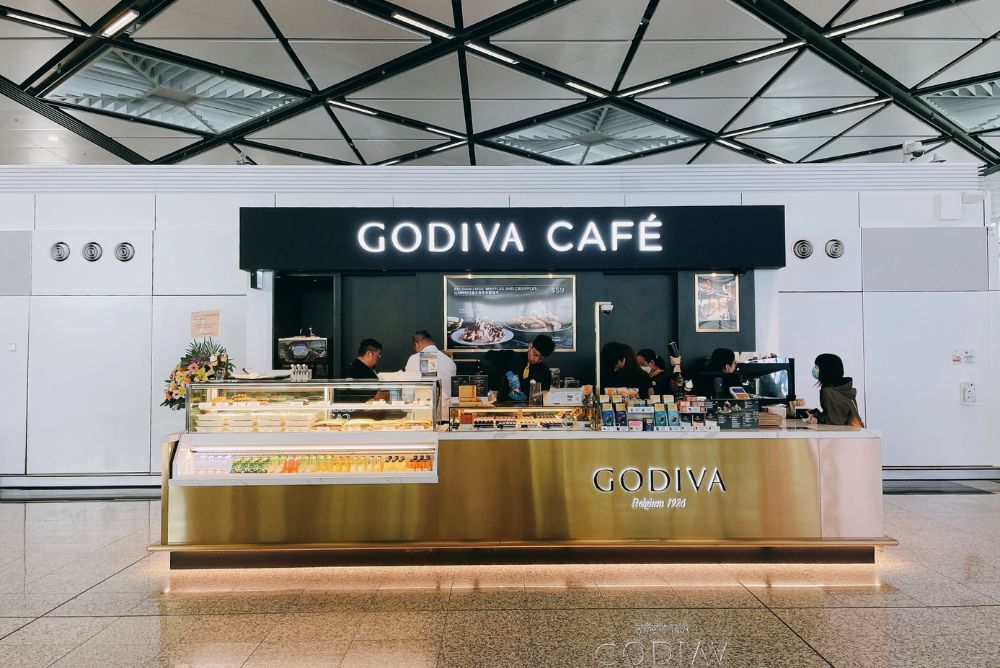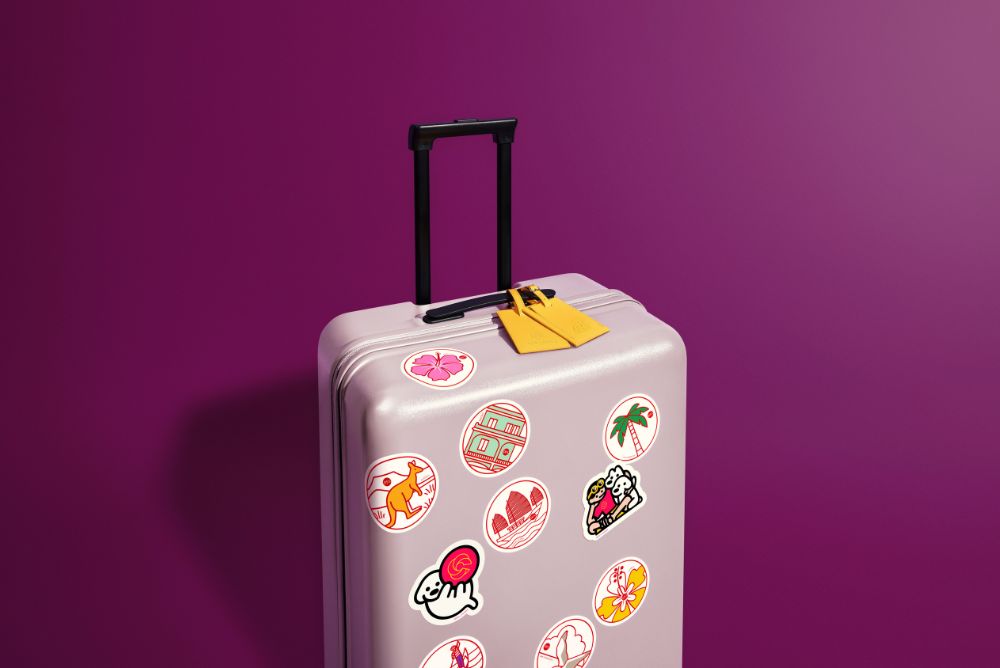Delivering ‘crave-worthy’ F&B brings foodies to the airline table
By Luke Barras-hill |

High Life Café includes pre-order items from Michelin-starred chef Tom Kerridge’s gourmet range.
From Michelin-starred chef-approved meals to ready-to-drink cocktails, elevating buy-on-board (BoB) is enhancing the inflight experience for passengers. Plus, it can help brands to amplify awareness and bump-up sales volumes. Words: Kevin Rozario.
Buying food and beverage (F&B) onboard airlines has become a commonplace experience, and some observers say it will take over from where duty free retailing onboard has left off. Having seen several global airlines such as KLM and Finnair drop inflight duty free over the years, the move to F&B to make up the revenue shortfall makes sense.
Once the preserve of low-cost carriers looking to extract every last penny from customers, F&B buy-on-board is now a feature on many legacy airlines too. The model had, after all, proven to be quite sturdy during the pre-pandemic drive for ancillary revenue.
When, in 2017, British Airways ditched all but basic free food on short haul flights in favour of pay-for M&S sandwiches, the shift naturally sparked controversy. Prices started fairly low and crept up to £4.75/$6.05 for M&S Café bacon rolls; tomato and mozzarella focaccia; or Aberdeen Angus beef and red onion chutney bloomers.
The pre-order way
John Moriarty, the CEO of onboard retail tech consultancy Beyond, and a long-time travel retail expert, said: “It was the airline that suggested the brand to the operator which was Tourvest. This was a brilliant move because it softened the blow of going from complimentary to retail, from a passenger point of view.”
Not only was the pricing reasonable, but M&S Food is a trusted brand in the UK. During the pandemic, however, BA went more upmarket, dropping M&S for a menu from Michelin-starred chef Tom Kerridge, without raising prices. But there was a twist; ordering had to be carried out online at least 12 hours before boarding, so this was not technically BoB.

Fernando Guinea, Global Vice President, gateretail.
Bringing more original/upscale menus to passengers has been an objective for many carriers. For example, in North America, JetBlue offers Fresh Tastes, a seasonal and regionally inspired menu with made-to-order salads, sandwiches, and wraps using fresh ingredients, according to Francesco Fazio, Partner at strategic growth consultancy Treacy & Company.
He told TRBusiness: “The airline collaborates with well-known food brands like Kind and Bare Snacks. It has also developed a centralised marketplace platform so that passengers can pre-order from a wider selection of brands and restaurants before or during their flight.”
Other brands include Archer Roose wines (in cans) and $10 spirits miniatures from Bacardi to Tito’s.
Championing local flavours, Alaska Airlines also relies on local flavours and signature dishes, with tie-ups to popular restaurants, plus beverages from regional brands like Stash Teas and Straightaway Cocktails, both from Portland.
“Alaska also offers curated meals for purchase onboard, including chef-designed recipes,” said Fazio.
Established names like Starbucks and Pizza Hut are also partners for BoB to cater to all tastes and wallets. Many of the meals are to pre-order only, at least 20 hours prior to departure. As technology improves, F&B pre-order appears to be the way to go. Last summer, LSG Group doubled down on Retail inMotion’s fully integrated pre-order solutions using Vector, the division’s proprietary IT software suite.
It allows passengers to shop at any stage of their journey; from flight booking and check-in to order-to-seat services for both F&B and duty free from seat screens or shoppers’ own devices. Having seamless online and onboard ordering systems with contactless payment options ensure enhanced convenience – and it’s what the passenger expects. The benefit is that if, for example, a passenger likes the wine they tried onboard they can order it via the platform and have it delivered. This can bump up revenue for all parties.
At gategroup, both F&B and duty free continue to be “very healthy businesses” driving onboard consumption according to Global Vice President of gateretail, Fernando Guinea.
“They allow us to enhance the passenger experience and the ancillary contribution from retail,” he said. But the VP noted that the two categories had different drivers: F&B being a higher converting category while duty free generates higher transaction values.
Guinea added: “F&B goes from strength to strength. Gateretail’s onboard offering has never been better in terms of quality, variety, innovation, and value. We have several key initiatives in the pipeline this year in the form of partnerships, sales channels, and digital.”
These projects are designed to enhance personalisation, experience, choice and convenience and the end result is an expectation of strong growth in 2024.
“Once again our digital backbone will enable these key aspects to offer passengers a different way to engage with brands and products,” added Guinea.
To read the full article, see the TRBusiness February e-zine.
Alcohol insights: Conversion up, spend down in Q4
Conversion of visitors in the alcohol category in duty free has risen to 54% in Q4 2023,...
Men buy and spend more in travel retail says new research by m1nd-set
Men have a higher conversion rate and spend more when shopping in travel retail, says new...
Saudia Arabia's KKIA unfurls T3 duty free expansion
King Khalid International Airport (KKIA) has unveiled the first stage of its much-vaunted duty...
-
 International,
International,Alcohol insights: Conversion up, spend down in Q4
-

-
 International,
International,Saudia Arabia's KKIA unfurls T3 duty free expansion

In the Magazine
TRBusiness Magazine is free to access. Read the latest issue now.

 Trbusiness. The travel retail Trbusiness. The magazine for global retail and duty free professionals.
Trbusiness. The travel retail Trbusiness. The magazine for global retail and duty free professionals.





















